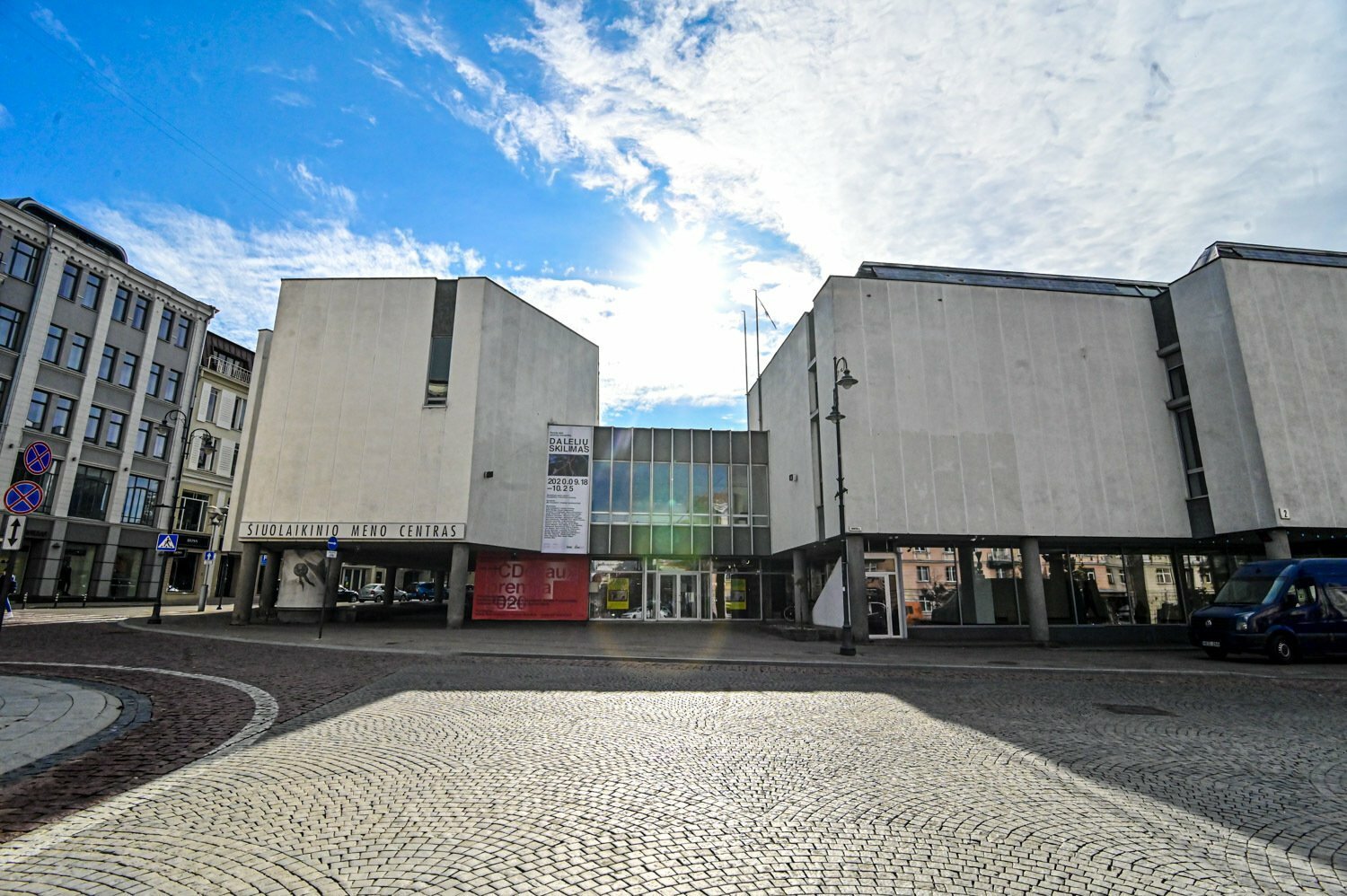A defensive wall engirdled Vilnius, and at the same time gates around the city were installed. Because of them, some old street names still survived: Aušros (Dawn), formerly known as Medininkų (Woodmen) and Aštriųjų (Sharp) streets; as well as Trakai, Castle, Bernardine, Vilnius and Tatar, which became well-known capital streets.

One of the oldest streets in Vilnius is Vokiečių (German) street, which got its name from German merchants and artisans who came from Riga in the 14th-century. In the 16th-century it was the most beautiful street because there were many brick houses.
Georg Braun created the most beautiful atlases of cities and a city plan of Vilnius. In the 16th-century, before the Vilnius fire in 1530, he portrayed dozens of Vilnius streets. One of them was the German st., introduced as a street with four-storey buildings unusually high during the old times.

The name of the German Street, like many other city names, has been transformed by era and government, thus by language too: Die Deitsze gasse, Gasztoldowska, Monetowa, Nemeckaja, Niemiecka, Vokiečių and Museum before 1988.

In the second half of the 19th-century, Jews settled on German street and engaged in trading.
As the book “Vilnius. From its beginning to 1750” by J. I. Kraševskis says:
German street, but only famous for its name,
Because you won’t find Germans even with a candle in the daylight,
Because here are only Jews…


German street was one of the busiest streets in Vilnius, and life was in a full swing. Here you could find luxury hotels, bank offices, various shops, cafes and restaurants. For example, Fania Lewando’s dietary vegetarian canteen, where the world’s first vegetarian recipe book was created. One of the outstanding luxury hotels was called “Europa.” It had impressive architectural details and high-quality food in its restaurant. Therefore, the place attracted honourable guests and wealthy locals. Unfortunately, after the war, the building vanished.
World War II transformed the German Street — the Jewish eastern side was burnt and destroyed. It was on this side that the Great Synagogue stood (Vokiečių St. 13A). Although this building did not survive, you can take a virtual walk.




Places of Interest on German Street now:
Dwarf Passage is an old arcade with a covered gallery that connects two houses and two streets; named after dwarfs because of its unusual height, and being the lowest arch in Vilnius.
The arcade connects Pranciškonų and Vokiečių streets. You can find it when entering the yard with a large arch on the side of Pranciškonų Street or in Vokiečių Street near “Pizza Jazz” restaurant. After walking through the passage, you enter a cosy courtyard of the Old Town.
 Vilnius Evangelical Lutheran Church (built in 1583 in a Baroque style) is the only church of this religious branch in Vilnius. Fires and war damaged the building, and many religious people left the country. During the Soviet years, the church became a basketball court and restorer workshops. After the independence, the church was returned to the Lutherans and restored in 1995.
Vilnius Evangelical Lutheran Church (built in 1583 in a Baroque style) is the only church of this religious branch in Vilnius. Fires and war damaged the building, and many religious people left the country. During the Soviet years, the church became a basketball court and restorer workshops. After the independence, the church was returned to the Lutherans and restored in 1995.
 The Contemporary Art Centre is an art institution established by the Lithuanian Ministry of Culture in 1992. The CAC replaced the Art Exhibition Centre and settled in the building in Vokiečių st. 2. The CAC owns five exhibitions (total area over 2000 m²) and one cinema hall.
The Contemporary Art Centre is an art institution established by the Lithuanian Ministry of Culture in 1992. The CAC replaced the Art Exhibition Centre and settled in the building in Vokiečių st. 2. The CAC owns five exhibitions (total area over 2000 m²) and one cinema hall.

Museum of Illusions in Vokiečių st. 6 was founded in 2016. the Science and Art Museum offers a lot of fun for both children and adults. Before the building housed a popular children’s restaurant “KukuMuku.”

The Sculpture of Barbora Radvilaitė. Some historians claim that the location of the sculpture, although accidentally, was very well chosen because Barbora Radvilaitė was born in one of the houses in this area or nearby. The author received permission to build the sculpture only as a decoration.

Project partner: Vilnius City Municipality
